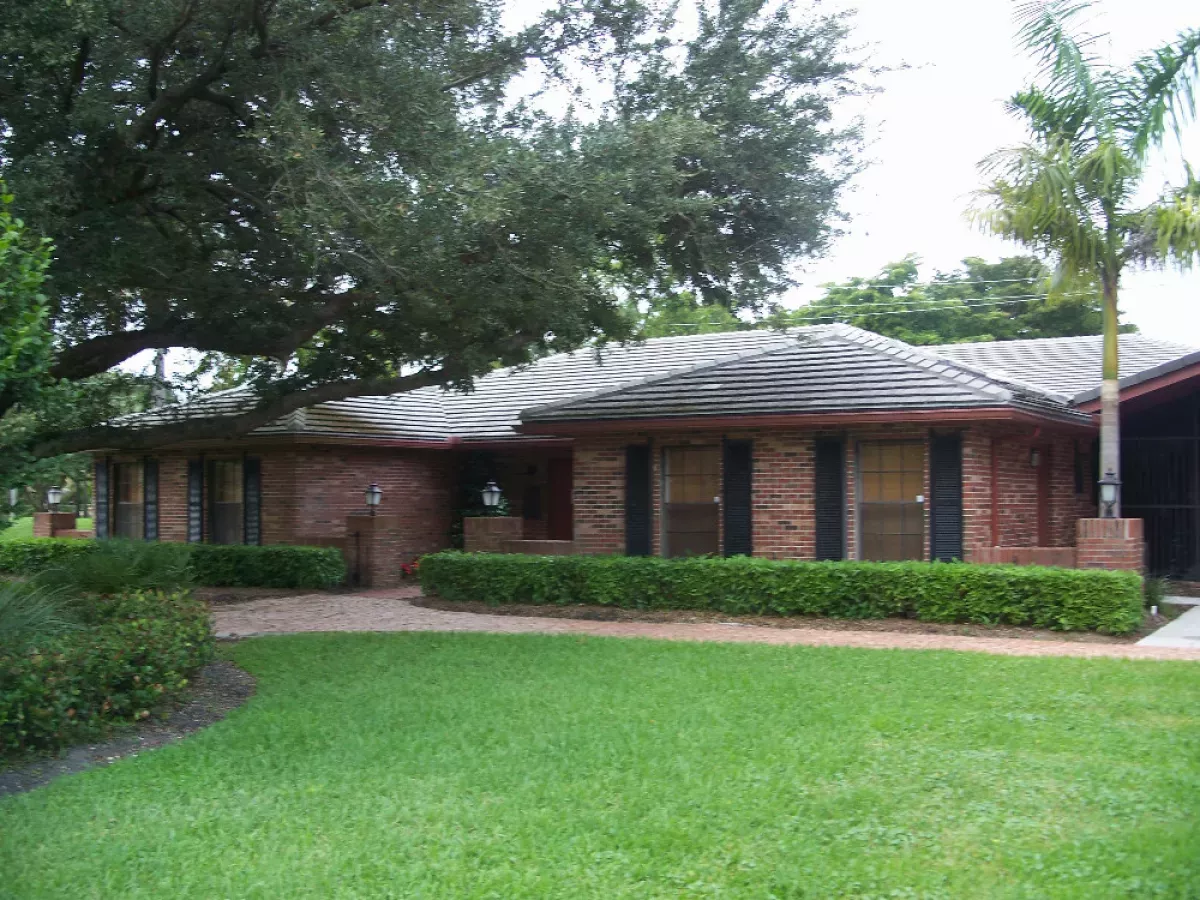Plantation, located in Broward County, Florida, is part of the South Florida metropolitan area. The city's name originates from the Everglades Plantation Company, previous landowners who unsuccessfully attempted to establish a rice plantation. According to the 2020 US census, Plantation had a population of 91,750.
1906: First Attempts to Drain the Everglades
The first attempts to drain the Everglades started in 1906 with the construction of two dredges. The Okeechobee and The Everglades began digging canals from the south and north forks of the New River, respectively.
1908: Richard J. Bolles Becomes First Private Developer in the Everglades
Richard "Dicky" J. Bolles struck a deal with Broward and Jennings at the 1908 Democratic National Convention, securing 500,000 acres of overflowed state land for development and becoming the first private developer in the Everglades.
January 1909: Everglades Plantation Company Established
Adam A. Boggs and A.B. Sanders established the Everglades Plantation Company in January 1909, with the goal of creating a rice plantation in the Everglades.
1911: Progresso Land Auction Held
Richard J. Bolles held the Progresso Land Auction in 1911, selling residential lots in the Town of Progresso, now Wilton Manors.
1912: North New River Canal Opens, Sewell Lock Built
The North New River Canal, which included the Sewell Lock, the first lock in Florida, opened in 1912, connecting the Everglades and Lake Okeechobee.
November 1913: Lawsuit Against Bolles Settled
The lawsuit against Bolles, stemming from the undrained land sold at the Progresso Land Auction, was settled in November 1913.
1914: Everglades Plantation Company Wins Legal Battles
Legal disputes between the Everglades Plantation Company and the Internal Improvement Trustees over rice plantation attempts concluded in 1914 in the company's favor.
1915: Broward County Established
In 1915, Broward County, named after former governor Broward, was created by combining parts of Dade County and Palm Beach County.
1920: Florida Land Boom Begins
From 1920 to 1925, Florida experienced a land boom, characterized by substantial population growth and land sales.
1925: Florida Land Boom Peaks, Then Collapses
In 1925, the Florida Land Boom, driven by drainage projects' success, peaked in the fall, followed by a collapse in 1926.
September 1926: 1926 Miami Hurricane
In September 1926, a powerful hurricane with winds of 140 miles per hour, known as the 1926 Miami Hurricane, struck the area, impacting communities and resulting in the loss of thousands of lives.
1926: Florida Land Boom Collapses
The Florida Land Boom collapsed in 1926, after peaking the previous year.
1926: Fort Lauderdale Country Club established
The Fort Lauderdale Country Club, spanning 293 acres, was founded in 1926. Despite facing setbacks due to the devastating 1926 Miami hurricane, the club persevered.
September 1928: 1928 Okeechobee Hurricane
The 1928 Okeechobee Hurricane, with wind speeds reaching 135 miles per hour, hit the region in September 1928, following the 1926 Miami hurricane, further devastating the area.
December 1928: West Side Golf Course leased and renamed
The West Side Golf Course, initially owned by Fort Lauderdale, was leased and renamed in December 1928. This marked the beginning of its new identity as the Fort Lauderdale Country Club.
1931: Frederick Peters Moves to Florida, Starts Businesses
In 1931, Frederick C. Peters, driven by doctor's advice, moved to Goulds, Florida, and ventured into potato and cattle businesses.
1939: Peters Purchases Land in Davie
Frederick C. Peters bought 10,000 acres north of Davie, Florida in 1939 for his cattle, after receiving advice from Stephan Zacher and conducting soil tests.
1942: Peters Constructs Ranch Buildings, Begins Cattle Operations
Peters built his first ranch buildings in what would become Plantation, designed by Stephan Zacher, and in 1942, he tasked Leslie E. Bitting with transferring and managing his cattle in the area.
1944: Peters Shifts Focus, Hires Pancoast for City Plan
Peters' vision shifted from a farming cooperative to a planned city between 1944 and 1945, leading him to hire architect Russell Pancoast for the city's master plan.
1945: Peters Hires Davis for Water Control System
Between 1944 and 1945, Peters hired C. Kay Davis to design a water control system for the planned city.
1946: Old Plantation Water Control District Established
In 1946, the Old Plantation Water Control District, a special-purpose local government, was established to manage drainage and canals in the area intended for plantation development.
1947: First Homes Built, "Plantation Homes Inc." Established
The first homes in Plantation, designed by Robert Law Weed, were constructed in 1947 on East Acre Drive under the name Plantation Homes Inc., marking the start of the city's development.
October 1948: Hurricanes Impact Plantation
In October 1948, two hurricanes caused significant flooding in Plantation, leading to damage to a dike under construction. Despite rapid repairs, the flooding impacted house sales, leading to a halt in sales the following year.
1948: Founding and Early Development of Plantation
In 1948, Plantation saw the completion of its first home, the start of large-scale construction, and the birth of its first child. The population grew to 30 families, and key infrastructure like dikes and a pumping station were built. The Plantation Community Church was also established this year.
1949: Community Organizations and Infrastructure
1949 marked the establishment of essential community organizations in Plantation, including Pumping Station No. 2, the Plantation Women's Club, and the Plantation Homeowners' organization. At this time, there were 40 occupied homes in the area.
1949: Infrastructure Development and Setbacks
Despite the halt in house sales due to the previous year's hurricanes, 1949 saw continued development in Plantation, with new roads, dikes, and houses being constructed. However, Clark's Plantation Homes Inc. dissolved, and its assets were transferred to Frederick C. Peters.
1950: Plantation Golf Course and Country Club Opens
In 1950, the Plantation Golf Course and Country Club was built, aiming to encourage the westward development of Broward Boulevard.
1951: Fort Lauderdale Country Club expands with North Course
In 1951, the Fort Lauderdale Country Club expanded with the addition of the 18-hole, 6,915-yard 'North Course.' This addition complemented the existing 'South Course,' enhancing the club's offerings.
April 23, 1953: Incorporation of Plantation
On April 23, 1953, Plantation was officially incorporated as a city. With a small population of 300 and a limited budget, Ellsworth D. Gage was appointed as the first Mayor. The city's initial operations were run from a repurposed community center.
August 1, 1954: Plantation: "The City of the Future"
On August 1, 1954, the Miami Herald unveiled Plantation's city plan, dubbing it "The City of the Future".
1955: New Mayor and the First Police Department
In 1955, S. Robinson Estey became Plantation's second mayor, the first to be elected to the position. This year also saw the establishment of the Plantation Police Department, with Henry C. 'Hank' Donath as the sole officer, responsible for the city's safety around the clock.
1956: Start of the Fire Department Fundraiser
The year 1956 marked the beginning of the Plantation fire department's annual barbecue fundraiser, a tradition that continues to this day.
1957: Establishment of Key Institutions
In 1957, Plantation saw the establishment of its Volunteer Fire Department, its first industrial plant (Airpax Products, Co.), the first sanctuary of the Plantation Community Church, and the completion of the Sunshine State Parkway.
1957: Fort Lauderdale Country Club transitions to private ownership
Originally a public club, the Fort Lauderdale Country Club transitioned to private ownership in 1957 when it was sold by the city of Fort Lauderdale.
1958: City Hall and Fire Station Construction
By 1958, Plantation's City Hall was completed, and a fire station was built on Broward Boulevard, with Frederick T. Peters assuming the role of fire chief.
1959: First School and Police Chief Appointment
In 1959, Plantation saw its budget grow significantly, and its first school, Berenice Todd Peters Elementary, was dedicated. Hank Donath was appointed as the city's first official police chief.
1960: Plantation Adopts "The Dream City" Slogan
In 1960, Plantation embraced the slogan "The Dream City", even incorporating it into license plates.
1961: Founding of the Plantation Library
The Plantation Library was founded in 1961, operating from Peters Elementary School, with Helen B. Hoffman leading the initiative and the Plantation Woman's Club providing volunteer support.
1962: Donations, Chamber of Commerce, and Hospital
1962 was a year of significant developments for Plantation. Edwin Deicke donated generously towards expanding the Hoffman Building. The city also saw the establishment of its Chamber of Commerce and the opening of Doctors General Hospital.
1963: Population Growth and City Motto
By 1963, Plantation's population had reached 8,500. The city officially adopted the motto "From the Wilderness, This City," accompanied by a seal designed by Mayor Estey and architect A.T. Hardel. A new community center, designed by Russell Pancoast, was also built, housing the city's first library.
July 1964: Sale of Land for Jacaranda Development
In July 1964, the Peters family sold a significant portion of undeveloped land to the Gulfstream Land Development Company. This land would be used for the development of the Jacaranda community, envisioned as a Broward County equivalent to Coral Gables.
1965: Construction of Plantation Elementary School
Plantation Elementary School was built in 1965, further expanding the city's educational infrastructure.
1966: Establishment of Plantation High School and Hospital
The year 1966 saw the opening of Plantation High School, the city's first high school, and Plantation General Hospital, a 264-bed facility, signifying substantial growth in education and healthcare.
1969: Expansion with The Florida Air Academy and Motorola
In 1969, Plantation expanded further with the establishment of The Florida Air Academy and a facility for the telecommunications company Motorola.
1969: Lago Mar Country Club is established
Lago Mar Country Club, a private golf course, was established in Plantation.
1969: Motorola commences operations in Plantation
Motorola commenced its operations in Plantation, establishing a presence in the city.
1970: Plantation's Population Reaches 23,523
By 1970, Plantation had experienced substantial population growth, reaching 23,523 residents.
1970: Jacaranda Golf Club is constructed
The Jacaranda Golf Club, a public golf course spanning 285 acres and designed by Mark Mahannah, was constructed in Plantation in 1970. The course features a length of 7,247 yards.
1972: New City Hall and Deicke Auditorium Construction
In 1972, Plantation accepted a construction bid for a new city hall, and the groundbreaking ceremony for the Deicke Auditorium took place.
1973: Deicke Auditorium and City Hall Dedication
In 1973, the newly renovated Deicke Auditorium (formerly the Hoffman Building) and the new Plantation City Hall were officially dedicated.
1973: Annexation and Shift in Development Focus
Plantation Acres and Melaleuca Isles were incorporated into Plantation in 1973. The Gulfstream consortium, acquiring the remaining Peters family land, shifted the city's development focus from rural to commercial and industrial, attracting businesses like Motorola and American Express and leading to the development of the Broward Mall.
1975: American Express establishes a presence in Plantation
American Express established a presence in Plantation, marking the beginning of its operations in the city.
1975: Frank Veltri Elected Mayor and American Express Arrival
Frank Veltri began his tenure as Plantation's longest-serving mayor in 1975, holding the position for 24 years. This year also saw American Express establish its 'Southern Region Operations Center' in Plantation, bringing in a significant workforce.
June 28, 1976: John Roselli's Last Residence
Mobster John Roselli lived in Plantation with his sister and brother-in-law until June 28, 1976. His body was later found in Dumfoundling Bay, Miami.
1976: US Bicentennial Celebration
Plantation celebrated the US bicentennial in 1976 by planting a 45-foot oak tree in Fifth Street Park, which was later renamed Liberty Tree Park.
1977: Plantation Heritage Park
In 1977, Plantation and Broward County acquired land from the Peters family farm and began developing Plantation Heritage Park with a grant from the Land and Water Conservation Fund.
1978: Broward Mall Opening and Silver Anniversary
The Broward Mall, the largest in the Southern US at the time, opened in Plantation in 1978. The city also celebrated its silver anniversary with a three-day event, including the burial of a time capsule.
1979: Florida Air Academy Closure
The Florida Air Academy in Plantation closed in 1979 and the land was sold to the Jewish Community Center.
1980: Lago Mar Country Club changes ownership
Lago Mar Country Club in Plantation was purchased from its original builders.
1980: Plantation Country Club featured in Caddyshack
Plantation Country Club gained cinematic fame in 1980 when its pool was used as a filming location for the movie Caddyshack.
1980: Population Growth and "Tree City" Designation
Plantation's population reached 48,653 in 1980. The city was also designated a "Tree City" by the Arbor Day Foundation.
1983: Plantation Central Park and Chamber of Commerce Relocation
Plantation Central Park, a 77-acre recreation complex, opened in 1983. The Plantation Chamber of Commerce building was moved but later demolished due to vandalism.
1984: PLANT Awards and Heritage Park Opening
In 1984, Plantation established the PLANT awards for outstanding landscaping. Plantation Heritage Park also opened to the public this year.
June 1985: Plantation Historical Museum Dedication
The Plantation Historical Museum, founded by Genevieve Veltri, was dedicated in June 1985 as an alternative to the vandalized Chamber of Commerce building.
1988: New Shopping Malls
Two new shopping malls, The Fountains Shopping Mall and the Fashion Mall at Plantation, opened in 1988, ten years after the Broward Mall.
1990: Population Reaches 66,116
Plantation's population grew to 66,116 by 1990.
1991: Charles Ankrom redesigns South Course
The 'South Course' at the Fort Lauderdale Country Club underwent a redesign by Charles Ankrom in 1991, aiming to enhance the course's layout and playing experience.
1993: Kemper National Services Opens
The insurance company Kemper National Services began operations in Plantation in 1993.
1996: Olympic Torch Relay and Plantation Towne Mall Fire
The Olympic Torch relay passed through Plantation during the 1996 Olympic Games. A large fire damaged the Plantation Towne Mall, leading to its reconstruction as Plantation Towne Square.
1998: Plantation City Hall transforms into a high school for "There's Something About Mary"
Plantation City Hall, located at 400 NW 73rd Avenue, was transformed into a high school for the filming of the 1998 movie "There's Something About Mary."
1999: Tom Pearson redesigns North Course
The 'North Course' at the Fort Lauderdale Country Club underwent a redesign by Tom Pearson in 1999, further enhancing the course's features and playability.
1999: Volunteer Park Community Center Opens
The 11,500-square-foot Volunteer Park Community Center opened in Plantation in 1999.
2000: Census unveils language diversity
The 2000 census provided insights into the linguistic landscape of Plantation. English was the most spoken language, with 78.01% of residents using it as their first language. Spanish followed at 13.00%, and other prominent languages included French Creole (2.24%), French (1.31%), Hebrew (0.72%), Portuguese (0.72%), Italian (0.59%), German (0.55%), Arabic (0.46%), and other languages (2.40%).
2000: Population Reaches 82,934
The 2000 census recorded Plantation's population at 82,934, representing 15 ethnic groups.
2001: Park East Multicultural Garden and Community Bus Service
Plantation opened the Park East Multicultural Garden and launched the Community Bus Service in 2001.
2002: New Community Centers and Parks
Plantation opened the Jim Ward Community Center, Jack Carter Harmony Park, and Happy Tails Dog Park in 2002.
2002: City purchases land for Plantation Preserve
The city of Plantation purchased the property that would become Plantation Preserve, marking the beginning of the development of a new city-owned golf course.
2003: 50th Anniversary Celebration
Plantation celebrated its 50th anniversary in 2003 with a week-long celebration and updated its time capsule.
October 24, 2005: Hurricane Wilma
Hurricane Wilma caused significant damage and power outages in Plantation on October 24, 2005, leading to the closure of the Fashion Mall in 2006.
2005: Plantation Equestrian Center Opens
The Plantation Equestrian Center opened in 2005.
April 2006: Plantation Preserve Golf Course and Club opens
The Plantation Preserve Golf Course and Club, a city-owned facility, was dedicated in April 2006. The 214-acre, 7,148-yard course was designed by Robert von Hagge, Michael Smelek, and Rick Baril.
2006: Kipp Schulties renovates both courses
Both the 'South Course' and 'North Course' at the Fort Lauderdale Country Club underwent renovations in 2006. Kipp Schulties led the redesign efforts, aiming to modernize and improve both courses.
2006: Fashion Mall closes, paving the way for Plantation Walk
Plantation was once home to two malls situated across from each other: Westfield Broward Mall and Fashion Mall. However, in 2006, Fashion Mall closed its doors. The site is currently undergoing redevelopment to become Plantation Walk.
2006: Fashion Mall Closes
The Fashion Mall in Plantation closed in 2006 following damage from Hurricane Wilma.
2006: Bobby Weed redesigns Jacaranda Golf Club
The Jacaranda Golf Club in Plantation underwent a redesign by Bobby Weed, aiming to enhance the course's layout and playing characteristics.
2006: Plantation Preserve Golf Course and Club Opens
The Plantation Preserve Golf Course and Club opened in 2006.
2007: Broward Mall Renovation and Renaming
The Broward Mall in Plantation was acquired by the Westfield Group, renovated, and renamed Westfield Broward in 2007.
2008: "100 Best Communities for Young People" Award
Plantation was named one of the nation's "100 Best Communities for Young People" by America's Promise Alliance for the first time in 2008.
2009: Kipp Schulties redesigns Lago Mar Country Club
Lago Mar Country Club in Plantation underwent a redesign by Kipp Schulties, leading up to its reopening in 2010.
January 1, 2010: Lago Mar Country Club reopens after redesign
Lago Mar Country Club, a private golf course in Plantation, reopened on January 1, 2010, following a redesign by Kipp Schulties. The club, originally established in 1969, was purchased from its initial builders in 1980.
2010: Census data reveals city's area
According to the 2010 census, Plantation spanned a total area of 21.93 square miles (57 km). Of this, 21.74 square miles (56 km) constituted land, while 0.19 square miles (0 km), representing 0.87%, was water.
2010: 2010 US Census reports population figures
Based on the 2010 U.S. census, Plantation had a population of 84,955. The city was home to 34,211 households and 22,156 families at that time.
2010: 2010 Census highlights household composition
Data from the 2010 census showed that family households made up 66.0% of the 34,190 total households in Plantation. Among these, 47.7% were husband-wife households, and 28.5% had a child under 18 years old living with them. Individuals living alone constituted 26.3% of households, while 8.3% had someone living alone aged 65 or older. The average household size was 2.47 persons, and the average family size was 3.01.
2010: Median age and age distribution revealed by 2010 Census
In 2010, the median age in Plantation stood at 39.7 years. The age distribution showed 23.5% of the population was 19 years or younger (21.5% under 18), 26.9% between 20 and 39 years, 30.0% between 40 and 59 years, 17.5% between 60 and 84 years, and 2.1% aged 85 or older.
2010: "100 Best Communities for Young People" Award
Plantation was named one of the nation's "100 Best Communities for Young People" by America's Promise Alliance in 2010.
2010: Population Reaches 84,955 and Fashion Mall Auction Canceled
The 2010 census reported Plantation's population as 84,955. A planned auction for the vacant Fashion Mall was canceled after the owner settled a court judgment.
2010: Gender demographics from the 2010 Census
The 2010 census revealed that females constituted 52.6% of Plantation's population. This trend continued in the over-18 age group, with females making up 53.5%.
2011: Diane Veltri Bendekovic Elected Mayor
Diane Veltri Bendekovic, daughter of former mayor Frank Veltri, was elected mayor of Plantation in 2011.
2011: "100 Best Communities for Young People" Award
Plantation was named one of the nation's "100 Best Communities for Young People" by America's Promise Alliance in 2011.
2012: Survey highlights business activity and retail sales
In 2012, a survey conducted among business owners in Plantation identified a total of 13,674 companies operating within the city. An economic census from the same year revealed that total retail sales in Plantation amounted to $1.72 billion.
2013: American Community Survey highlights education attainment
According to a 2013–2017 American Community Survey estimate, 93.4% of Plantation residents had completed high school or a higher level of education. Furthermore, 25.4% held a bachelor's degree, and 17.4% had obtained a graduate or professional degree.
2013: American Community Survey estimates income levels
Based on a 2013–2017 American Community Survey estimate, Plantation's per capita income in 2013 (adjusted for inflation) was $35,897. The median household income was $69,531, and the median family income reached $78,839. Full-time, year-round male workers earned a median of $54,188, while their female counterparts earned $44,537.
2013: Poverty rate estimated by American Community Survey
Between 2013 and 2017, an estimated 9.0% of Plantation's population fell below the poverty line, as per the American Community Survey. This figure translated to 6.7% of families. The poverty rate was higher among those under 18 (11.8%) and lower for those aged 65 or older (5.2%).
2013: 60th Anniversary and Publication of "Images of America: Plantation"
Plantation celebrated its 60th anniversary in 2013 with the publication of a new book about its history, "Images of America: Plantation".
2013: "Images of America: Plantation" by Shirley Schuler is published
Shirley Schuler authored "Images of America: Plantation," a book published by Arcadia Publishing in 2013. The book, with ISBN 9780738594156, delves into the history of Plantation through images.
2013: Employment landscape assessed in survey
The 2013-2017 American Community Survey revealed the occupational distribution in Plantation for civilians aged 16 and older. The largest employment sector was management, business, science, and arts occupations, representing 43.4% of the workforce. Sales and office occupations followed, accounting for 28.9%.
October 2014: Fashion Mall Developers File for Bankruptcy
The developers of the closed Fashion Mall in Plantation filed for bankruptcy in October 2014.
April 2015: Fashion Mall Property Sold
The former Fashion Mall property in Plantation was sold in a bankruptcy auction in April 2015 for $37.7 million.
2015: Motorola ceases operations in Plantation
Motorola, having maintained a presence in Plantation from 1969 to 2015, shut down its operations in the city.
2016: Fashion Mall Demolition Begins
Demolition of the Fashion Mall in Plantation began in 2016, making way for the Plantation Walk development.
2017: American Community Survey highlights education attainment
According to a 2013–2017 American Community Survey estimate, 93.4% of Plantation residents had completed high school or a higher level of education. Furthermore, 25.4% held a bachelor's degree, and 17.4% had obtained a graduate or professional degree.
2017: American Express Closes; Plantation Midtown Review Begins
American Express closed its Plantation office in 2017. The city began reviewing plans for Plantation Midtown, a mixed-use development, at the former American Express site.
2017: American Express departs Plantation
American Express, once a prominent business in Plantation from 1975 to 2017, closed its location in the city.
2017: American Community Survey estimates income levels
Based on a 2013–2017 American Community Survey estimate, Plantation's per capita income in 2017 (adjusted for inflation) was $35,897. The median household income was $69,531, and the median family income reached $78,839. Full-time, year-round male workers earned a median of $54,188, while their female counterparts earned $44,537.
2017: Poverty rate estimated by American Community Survey
Between 2013 and 2017, an estimated 9.0% of Plantation's population fell below the poverty line, as per the American Community Survey. This figure translated to 6.7% of families. The poverty rate was higher among those under 18 (11.8%) and lower for those aged 65 or older (5.2%).
2017: Employment landscape assessed in survey
The 2013-2017 American Community Survey revealed the occupational distribution in Plantation for civilians aged 16 and older. The largest employment sector was management, business, science, and arts occupations, representing 43.4% of the workforce. Sales and office occupations followed, accounting for 28.9%.
September 2018: Plantation Walk Legal Settlement
A legal settlement concerning the Plantation Walk development was reached in September 2018.
December 2018: Peoples Gas Customer Request
A customer of Peoples Gas, a division of TECO Energy, requested the closure of a gas line in December 2018. This request was not fulfilled, leading to the July 2019 explosion.
July 6, 2019: Gas Explosion at Market on University
A gas explosion at the Market on University shopping plaza in Plantation injured 23 people on July 6, 2019. The explosion was caused by People's Gas failing to properly close a gas line.
June 2020: Residents debate renaming the city
In June 2020, in the wake of the George Floyd protests, some residents advocated for renaming the city and local schools containing the word "plantation." This call stemmed from the association of the term with slavery in the American South. However, the city's name lacks direct ties to slavery, and other residents opposed the renaming.
2020: 2020 US Census records population statistics
The 2020 U.S. census documented a population of 91,750 individuals in Plantation. This figure encompassed 34,532 households and 22,738 families residing within the city.
2021: Westfield Mall renamed to Broward Mall
Following the decline of the Westfield Group, Westfield Mall reverted to its original name, Broward Mall, in 2021.
2021: Plantation Walk Completion Target
The Plantation Walk development, replacing the former Fashion Mall, was targeting completion in 2021.
Mentioned in this timeline
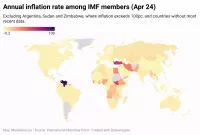
Inflation in economics signifies an increase in the average price...
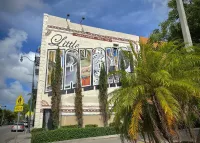
Miami is a major coastal city located in Florida United...
Florida a state in the Southeastern United States is largely...
The modern Olympic Games are a leading international sporting event...

Books are a means of storing information as text or...
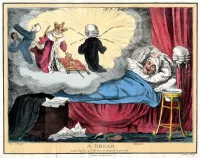
Dreams are involuntary sequences of images ideas emotions and sensations...
Trending
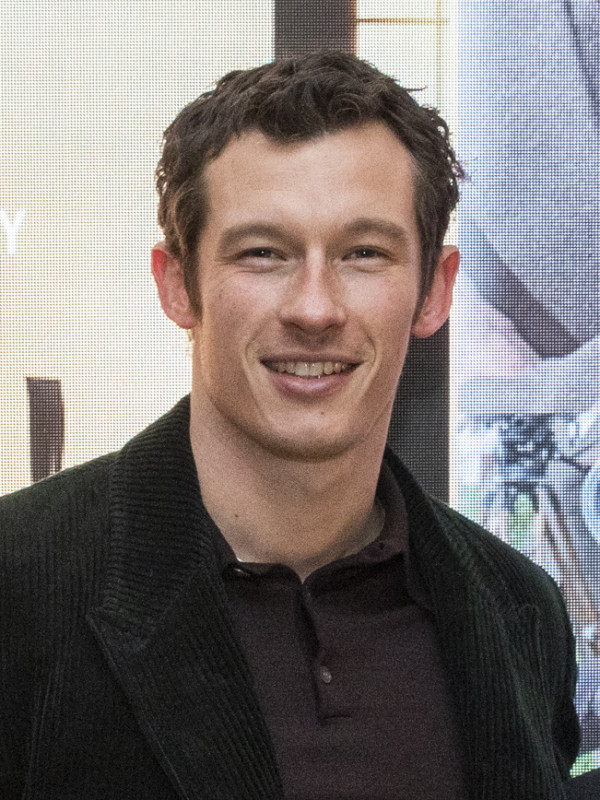
53 minutes ago Callum Turner: Rising Star and New Favorite for the Coveted James Bond Role
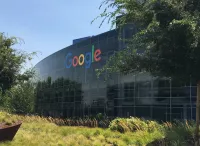
5 months ago New Lenovo Chromebook Plus 14 boasts 17-hour battery, Gemini AI features.
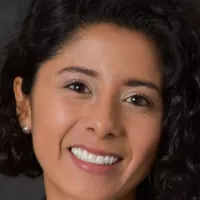
2 hours ago Lina Hidalgo Announces Separation from Husband David James, Citing Life Changes

2 hours ago Hayley Williams Excludes Racist, Sexist, and Transphobic Fans from Her Shows.
3 hours ago Winter Weather Advisory Issued: Freezing Rain, Icy Roads Expected in North Carolina
3 hours ago Rome man arrested after shooting at car in Verona, New York.
Popular
Aftyn Alyssa Behn is an American politician currently serving as...
Matt and Ross Duffer known as the Duffer Brothers are...

XXXTentacion born Jahseh Dwayne Ricardo Onfroy was a controversial yet...

Stranger Things created by the Duffer Brothers is a popular...

Lane Kiffin is an American football coach currently serving as...
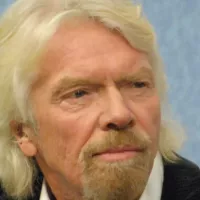
Richard Branson is a prominent English business magnate best known...
